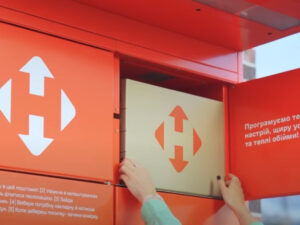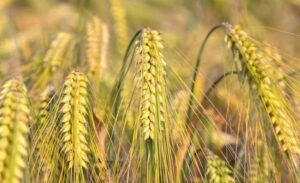
The Cabinet of Ministers on the initiative of the Ministry of Digital Information (Mincifra) has provided operators with tools to combat spam calls and intrusive advertising, said Deputy Prime Minister for Innovation, Development of Education, Science and Technology – Minister of Digital Transformation (Mincifra) Mikhail Fedorov.
“Ukrainians will no longer receive spam calls … Over time, operators will block spam, advertising and potentially fraudulent calls. These changes will be introduced gradually to give operators time for technical refinements,” Fyodorov wrote in a telegram channel on Friday.
According to the message, the changes are stipulated by Resolution No. 761 “On Approval of Rules for Providing and Receiving Electronic Communication Services,” which the government approved on June 25, 2025.
“Businesses must enter into an agreement with an operator and register numbers from which they can call. If not – calls from these numbers can be blocked automatically. Already soon the operator will be able to block the number on the user’s request in case of a spam call,” explained the Deputy Prime Minister.
Fedorov also announced a number of changes. In particular, in the near future users will be able to view all their expenses in the personal cabinet, as well as to turn off content services independently, without a request to the operator.
“From now on, the Internet speed must be spelled out in the agreement. If the operator promises 100 Mbit/s, and you get 40 – it is already a violation of the agreement. And if the real speed is lower – you can complain to the NECC or go to court,” – assured Fedorov.
According to him, Ukrainians living in the war zone will not lose communication due to non-payment for services, their SIM-cards will not be blocked. During the first entry into the network, a free package of communication will be provided.

The European Bank for Reconstruction and Development (EBRD) plans to provide a loan of up to EUR 50 million to Nova Poshta LLC of the Nova Group of Companies (GC) to finance part of its capital investment program for 2025-2026, with a focus on improving operational efficiency and supporting the company’s development strategy in Ukraine during the war.
“… includes improving physical infrastructure, optimizing and expanding the network, modernizing IT systems, improving energy management, and restoring human capital,” the bank lists the elements of Nova Poshta’s development strategy on its website.
It is noted that the loan will be multi-currency with the possibility of selecting funds in hryvnia and euros and will consist of two tranches: tranche 1 in the amount of EUR 35 million will be reserved from the moment of signing, tranche 2 in the amount of EUR 15 million will be reserved by the bank solely at its discretion.
The total cost of the project, according to the report, is EUR 69.1 million.
The EBRD reminds that Nova Poshta is the leading private postal and courier operator in Ukraine, with a network of more than 12,000 branches and 27,000 post offices and about 34,000 employees. Every month, the company provides services to more than 11 million customers in Ukraine.
This project, which has passed the final review stage and is awaiting approval, possibly in June, is the fifth in the history of relations between Nova Group and the EBRD.
It is noted that under the existing loan, in May 2025, the company informed the bank of a planned reduction of about 2,900 employees, which is less than 10% of the total number. The EBRD emphasizes that the analysis of this reduction process confirmed that the client complies with the terms of such collective dismissals stipulated in the loan agreement, provided a detailed description of the reduction process, has an effective grievance system and responds appropriately to them without any litigation, and has an effective process of interaction with the trade union, which is informed about the large-scale restructuring plan that will affect employees throughout 2025.
As reported, last August, the EBRD provided a EUR 70 million loan to Nova Group to finance its investment program for 2024.
According to Nova Poshta’s financial report for the first quarter of 2025, its net consolidated revenue increased by 20.7% compared to the first quarter of last year to UAH 14 billion 333.2 million, while net profit decreased by 21.4% to UAH 567.7 million. The ultimate beneficial owners of the company are Volodymyr Popereshnyuk and Viacheslav Klymov.
As noted by the Standard Rating agency, as of the beginning of April this year, with total accounts payable of UAH 13.51 billion, Nova Poshta used, in addition to long-term bank loans, resources raised from the issue of two series of bonds – E and F series of UAH 1 billion each.

The barley market in Ukraine shows the potential for growth, and there is tension in the market due to limited supply, according to the analytical cooperative “Pusk”, created within the framework of the All-Ukrainian Agrarian Council (AAC).
The analysts noted that as of June 23, 2025, barley exports amounted to more than 6 thsd tonnes.
“This is the expected consequence of the low level of stocks at the end of the season. The volume for export is currently limited, which restrains the activity on the foreign markets,” the experts said.
They reminded that the harvesting campaign started in the south of Ukraine, where the yields on the first fields were low and ranged from 1.15-2.5 t/ha.
“Taking into account the weather challenges that have accompanied winter crops since February, the current yields look quite predictable. The average yield of barley in Ukraine is likely to be around 3 t/ha,” the analysts predict.
They stated that the activity on the domestic market is growing, in particular due to the approach of the first shipments in ports. However, supply from producers remains restrained, which creates a shortage in the spot market. This leads to an expected increase in crop prices.
“As of the end of June, the seasonal model shows conditional barley prices in the range of $196-200 per ton, while producers are focused on $200-205. Given the limited supply, this is a very realistic prospect for the coming weeks,” Pusk summarized.

The rise in energy prices as a result of the conflict in the Middle East could weaken economic growth in the eurozone and thus smooth out inflation, said Luis de Guindos, deputy head of the European Central Bank (ECB).
“The emergence of the Iranian-Israeli conflict adds some uncertainty to the dynamics of oil prices,” The Wall Street Journal quoted him as saying. It is therefore important to keep a close eye on developments in the real economy as an indicator of inflation prospects.”
According to de Guindos, the increase in duties on European exports to the United States will certainly slow down inflation in the currency bloc, including because it will weaken economic growth.
“Higher duties are expected even if bilateral negotiations are successful,” the deputy head said. The ECB cut its key policy rate in June and made it clear that it was nearing the end of its monetary easing cycle. In May, inflation in the euro area was below the 2% target.
However, de Guindos’ comments suggest that the rate may have to be cut further to keep inflation around 2%, the WSJ writes.
Source: http://relocation.com.ua/rising-energy-prices-could-weaken-economic-growth-in-europe/

Metinvest Mining and Metallurgical Group increased environmental spending at its enterprises by 2% year-on-year to $170 million in 2024, according to Metinvest’s presentation at the Barclays ESG Emerging Markets Corporate Day, published on the Irish Stock Exchange on Wednesday.
According to the presentation, the group increased its investments in energy efficiency projects by more than 50% in 2024 compared to 2023, spending about $17 million.
The document states that the group has benefited from the Black Sea Corridor opened in the second half of 2023: it helped to increase capacity utilization and open up effective access to remote markets, which in turn contributed to operational and financial results.
At the same time, the group’s operations at Pokrovskugol were suspended due to changing conditions on the frontline, energy supply shortages and the security situation.
The presentation notes that the global pricing environment remained volatile amid ongoing uncertainty caused by trade tensions in the United States, as well as other geopolitical and economic factors.
“Metinvest emphasized that with changes in supply chains, assets outside Ukraine have adapted to the new circumstances. Processing plants in Italy and the UK are now focusing on their local markets, with little or no Ukrainian supply. The plant in Bulgaria continues to use Ukrainian raw materials. American coking coal mines have increased their supplies to Ukrainian coke plants.
According to the presentation, Metinvest has been consistently fulfilling its environmental obligations even in times of war, prioritizing energy security management to ensure stable operation of its assets. Thus, the Group has purchased diesel generators and started installing gas piston units. It also plans to deploy solar power plants to increase energy autonomy at its production facilities in Ukraine, while critical repairs continue to keep dust and gas emissions below permissible levels.
In addition, Pivnichny GOK launched a project to thicken concentration waste to reduce the volume of sludge sent to the tailings pond.
Air emissions increased by 5% due to increased production at Northern GOK and Kametstal. Water consumption increased by 6% following the launch of an additional unit at Kametstal’s thermal power plant. The Group recycled and reused 92% of water consumed from all sources.
The volume of waste generated increased by 10%, reflecting higher capacity utilization at Northern GOK. Almost all of the waste was non-hazardous, mainly overburden and tailings from iron ore production.
The presentation states that Metinvest remains committed to the future of its green steel and continues to explore opportunities to move towards carbon neutrality, focusing on improving the quality of iron ore products at Northern GOK as its magnetite ores are well suited for pelletizing; Northern GOK is already capable of producing 2.3 million tonnes of high quality pellets per year, which are used in direct reduced iron technology. Efforts are also underway to build a new, state-of-the-art green steel plant in Italy in partnership with Danieli with a planned annual capacity of 2.7 million tons of low-carbon hot-rolled steel.
The way to decarbonize Metinvest’s Ukrainian assets will be determined after the active phase of the war is over and its impact is assessed.
As of the end of 2024, the Group’s adjusted headcount amounted to 40,535 thousand people (excluding employees with suspended employment), down 13% year-on-year. As of the end of 2024, about 6,000 employees served in the Ukrainian defense forces, which is 15% of the adjusted headcount.
“Metinvest is a vertically integrated group of steel and mining companies. Its businesses are located in Ukraine, in Donetsk, Luhansk, Zaporizhzhia and Dnipro regions, as well as in the European Union, the United Kingdom and the United States. The main shareholders of the holding are SCM Group (71.24%) and Smart Holding (23.76%). Metinvest Holding LLC is the management company of Metinvest Group.

Experts Club has analyzed the brick market in Ukraine and made a number of conclusions and forecasts. The brick market in Ukraine is gradually recovering from the destruction and recession caused by the full-scale war in 2022. In 2024, there was an increase in construction activity, especially in the residential and infrastructure construction segment, which provoked an increase in demand for bricks.
At the end of 2024, the market showed an increase in capacity by 18.5%. In the first half of 2024, production reached ~249 million bricks, up 20.4% compared to the same period in 2023. The annual production volume in 2024 was estimated at 500-520 million bricks, and in 2025 – 535-555 million bricks with a forecast growth of 7%.
The largest Ukrainian producers are concentrated in the central and western regions of the country. Due to the hostilities in 2022-2023, refractory brick factories in the east, such as Bilokamianske and Zymohirske, were destroyed or decommissioned.
However, a large part of traditional brick production managed to maintain or resume operations by 2024.
Imports.
Due to the destruction of production facilities and rising demand, Ukraine is increasing its brick imports. The main supplier countries are: Poland
Imported products are mainly sent to the western and central regions and are used in high-budget construction and decoration.
Market shares: imports vs. domestic production
Based on estimates for 2025:
This makes it possible to compensate for the shortage in some regions and support construction during the reconstruction period.
Prices.
Experts Club ‘s forecasts are as follows:
Brick factories operating in the government-controlled areas
There are more than 30 brick factories operating in the government-controlled areas, including ceramic, silicate and clinker. Among the largest are:
Currently, the products of these plants cover more than 70% of domestic demand for bricks in construction.
Major brick importers to Ukraine
To compensate for the deficit and ensure high quality in some market segments (refractory, clinker, facing), Ukraine imports products from
In 2024, the Ukrainian brick market entered a phase of active recovery. Domestic production provides the bulk of the output, but the share of imports remains significant and is growing. Restoration of the destroyed infrastructure, support from the government and international funds will continue to stimulate the market, and prices will stabilize closer to 2026.
Source: https://expertsclub.eu/rynok-czegly-v-ukrayini-v-2024-2025-rokah-korotkyj-oglyad-vid-experts-club/